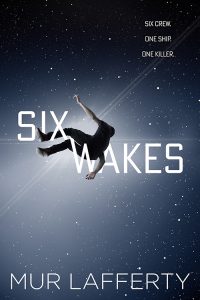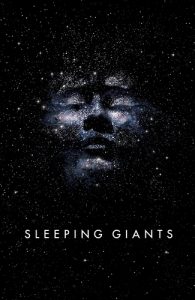Some of my favorite stories and novels are told from first-person perspective, and I love to employ first person narrators myself. I’m intrigued by the instant narrative situation they create when they come along and say: sit down and listen, I’m going to tell you a story.
But they sure are special snowflakes. I struggled to make a story work with a first person narrator these days, trying to find the voice of an unruly protagonist, and a beginning that didn’t suck. While ditching dozens of approaches, I again learned a lot, so why not put it on record for future reference?
First person narration is so different from third person narration that a certain amount of readers simply doesn’t like it. It is the original, primal storytelling mode (someone experienced something and goes on to tell the tale), but in fiction, third person has become the default mode. For me, third person narration is like hitting play on the media device of your choice, while first person narration is like sitting down with a storyteller. Some people enjoy being steered and sometimes overpowered by a narrator, some people just want to see how the events come to pass without a guide. But don’t be fooled; the storyteller may be hidden behind the ‘camera’ in third person narrations, but she’s there, deciding what you get to see.
As a writer, I feel like entering no-rules-country with a first person narrator, and you don’t even have to install an unreliable narrator for that (although it’s debatable if they aren’t all unreliable per default). While in third person you seem to have a limiting frame, looking through the eyes of one person at one time, you don’t have to tell one thing after the other with a first person narrator who may know the whole story. Tenses become arbitrary, and you have to decide, decide, decide: Why put this element here and not there? Why show it at all and not do a charming summary? Anything goes, except when it doesn’t. Of course you don’t have to do anything at all in third person narration either, because there are no rules if you can pull it off. First person narrators may be a good training ground for your storytelling antennas. You’ll have to make sure to sort out what’s really important and how and when it is best presented.
The distance between first person narrator and reader is anything but zero. No one thinks of himself or herself as the “I” in a story. A story is not a pop song, like a one-size-fits-all representation of your everyday joys and worries. You experience a different perspective, and for me, first person narrators even create a greater distance: while they are undeniably present in shaping the flow of the story, they seem to vanish from the events themselves. The narrator is at the same time inside the story (unless she tells about other people’s adventures) and outside of it. When she stands beside the reader, whispering in his ear, she just can’t be completely in the thick of the things she’s describing, only an aspect of her can. So you close one kind of distance, but open up another. This distance will also show in the places where first person narration appears to be artificial (as in: whoever remembers every single word of a years-old conversation?*).
There is, of course, a trick to avoid this. Well, there’s certainly more than one, but this one is very obvious: why not put the narrator in an ongoing now moment and tell the story in present tense? No distance at all, and you’re breathlessly rushing alongside your protagonist all the time and experience everything in real time. Expect that real time creates bloated abominations of stories. And while breathless rushing is fun in action scenes, it tends to suck when it whips you through a whole novel. At the moment, only two authors who did this with grace come to my mind – remarkably using a very similar plot device: Matthew Stover in Acts of Caine (first person narrator in present tense whenever Caine’s adventures are broadcasted to an audience, but third person when he is offline), and Linda Nagata in The Red (first person and present tense all the time, and there are hints that this is a show broadcasted to an audience).
There are brilliant first person narrations out there. I’m reading one at the moment and will recommend it fervently next week. In my own story, I opted for third person in the end. But I think messing around with various first person approaches helped me find the voice I needed.
*She’s making it up, of course. She’s a storyteller, not an archivist.


